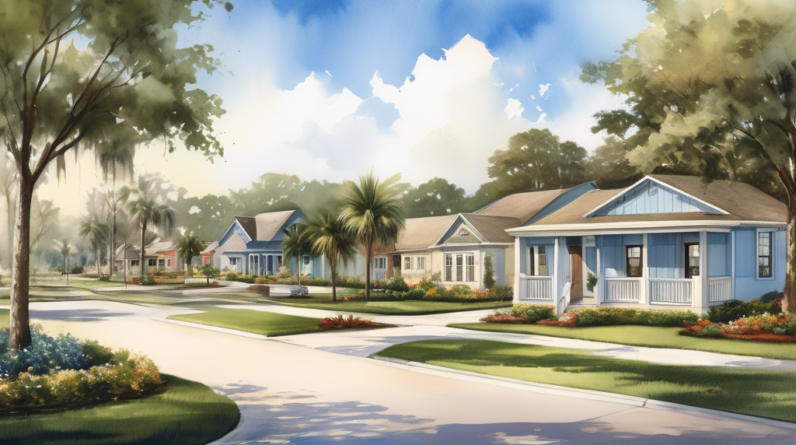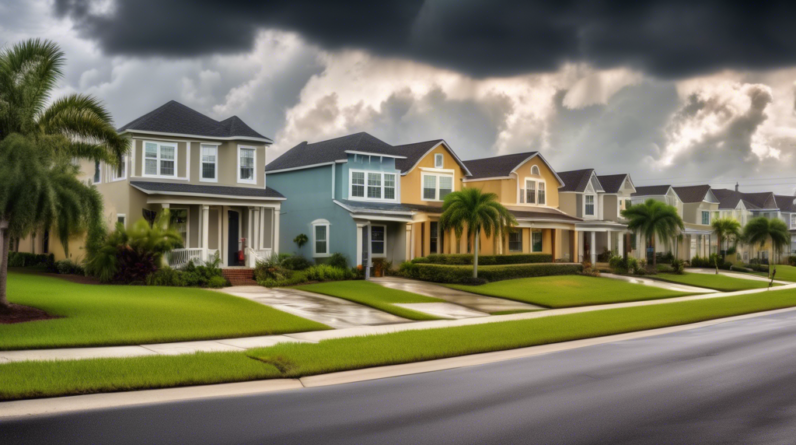Is Florida’s Housing Market Facing Challenges? Here’s What the Data Reveals
Florida’s housing market is currently navigating a complex landscape, characterized by a combination of increased inventory, fluctuating sales trends, and varied regional developments. Recent data offers insights into these dynamics, highlighting both emerging challenges and potential opportunities.
Housing Inventory Increase
One of the most notable developments in Florida’s housing market is the 34% year-over-year increase in housing inventory, marking the highest growth rate in the nation. This spike is predominantly observable in Southwest Florida, particularly in areas like Cape Coral and Fort Myers. These communities were severely affected by Hurricane Ian in September 2022, contributing significantly to the surge in available properties.
Sales and Market Trends
The state has witnessed a decline in the number of homes being sold, a factor partly explained by the cyclical nature of real estate markets. Following the remarkable sales peak of 2021 driven by low interest rates and population influx, current sales levels appear to be stabilizing to a sustainable norm. This adjustment reflects a market rebalancing rather than an outright downturn.
Foreclosure Trends
Foreclosure rates in Florida are also on the rise, with notable increases in regions such as Lakeland, Orlando, and Miami. South Florida has experienced nearly a 50% increase in foreclosures compared to February 2022, signaling potential stress in certain segments of the housing market.
Home Prices
Despite some sales decline, property values in South Florida have reached unprecedented heights. In Miami-Dade County, the median sales price for single-family homes stands at $650,000, with condos priced at $420,000. In neighboring Broward County, the median prices are $625,000 for houses and $290,000 for condos, reflecting robust demand despite market fluctuations.
Regional Variations
The housing market trends vary significantly across Florida’s regions. For instance, Jacksonville is facing increased inventory and slower sales. Meanwhile, metro areas like Cape Coral and Deltona rank among the slowest in the U.S. for home sales, indicating a more static market environment.
Commercial Real Estate
Florida’s commercial real estate sector remains vibrant, fueled by the state’s expanding population and advantageous position for international trade. This sector offers dynamic growth opportunities, particularly in areas bolstered by economic vitality and demographic shifts.
New Developments and Investments
There is a steady stream of developments and substantial investments within the state’s real estate landscape. For instance, Miami Beach is home to a luxury condo development anticipating a penthouse sale valued at over $120 million. Moreover, a commercial real estate portfolio in Sarasota is currently listed at $76.8 million, signaling investor confidence in the market.
Housing Permits
Interestingly, despite high demand, the filing of housing permits in the Orlando area has decelerated. This trend contrasts with the region’s population growth and robust demand, suggesting a possible bottleneck in development processes or a cautious approach to new projects.
Conclusion
The data suggests Florida’s housing market is experiencing a normalization process following the extraordinary conditions prompted by pandemic-related disruptions. While indicators like rising inventory and variable sales figures might suggest a cooling off, they largely represent a move towards a more stable and sustainable market environment. Balancing these trends are opportunities for growth and development, particularly in commercial real estate and targeted investments, reflecting Florida’s enduring appeal as a dynamic real estate landscape.







